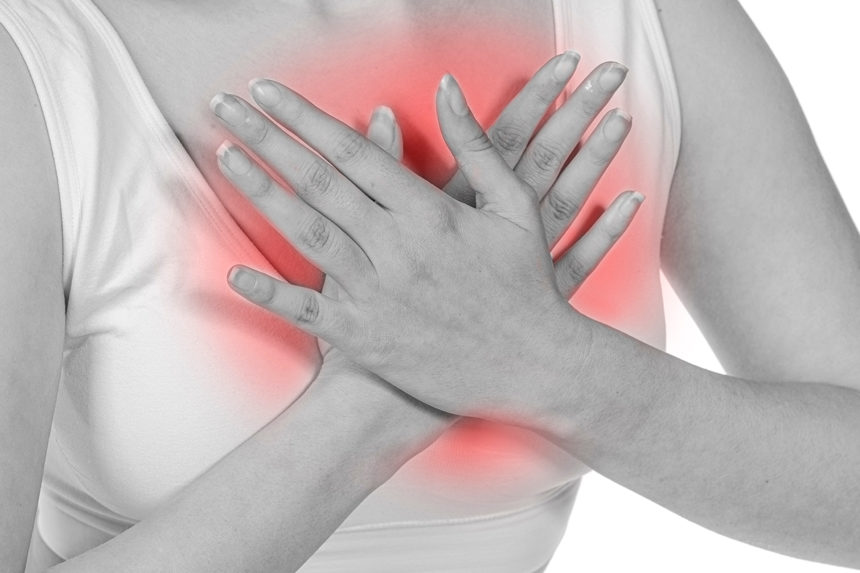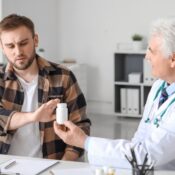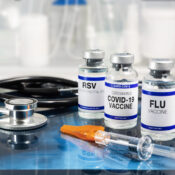“Your Health Checkup” is our online column by Dr. Douglas Zipes, an internationally acclaimed cardiologist, professor, author, inventor, and authority on pacing and electrophysiology. Dr. Zipes is also a contributor to The Saturday Evening Post print magazine. Subscribe to receive thoughtful articles, new fiction, health and wellness advice, and gems from our archive.
Order Dr. Zipes’ books, Ari’s Spoon, a new novel, as well as Bear’s Promise and Damn the Naysayers, A Doctor’s Memoir. Check out his website at dougzipes.com.
A toothache sent me to the dentist recently. He found a tooth infection and prescribed clindamycin, 300 mg three times daily, an antibiotic in a large capsule I’d never taken before.
After two days I developed a localized, gnawing pain beneath my breastbone at mid-chest level; the pain didn’t radiate out, but rather was confined to the one spot. Swallowing food, especially hot liquids like coffee, exacerbated the pain, which was bad but tolerable. On the third day, after dinner, I gulped down my third clindamycin capsule without water, went to bed . . . and triggered even more severe pain. Because the pain began within several minutes of ingesting the third pill that day, I diagnosed that I most likely had inflammation in the lining of my food tube (esophagitis) produced by contact with the capsule, not its contents. Not taking the pill with water, and then lying down, allowed it to get stuck in my esophagus.
Several glasses of milk failed to relieve the pain, which steadily worsened and then became so agonizing, my wife called 911. The emergency techs checked me out in the back of the ambulance and found that my blood pressure, heart rate, and ECG were fine. After resting a half hour or so, the pain gradually eased, though didn’t disappear entirely, and I was not hospitalized. Naturally, I stopped the medication, but it took three days before I could swallow again without pain.
As a practicing cardiologist for more than 50 years, I knew this was not heart related. Though I was well aware of a wide range of side effects from medications, I never had a patient who developed esophagitis from a pill. A recent article pointed out it is not that uncommon, especially in older folks and those with slowed esophageal function and/or reduced saliva.
It seems that the pill can lodge in the folds of the esophagus and create a localized toxic (acidic or basic) environment — depending on the type of pill — which inflames the lining, causing pain and possibly leading to esophageal ulceration or even perforation.
About 90 percent of all medications are taken orally because of convenience, cost, and compliance. However, I never realized that there is an “art” to swallowing medications that is determined by the anatomy of the esophagus and stomach, fluid dynamics, and how well the esophagus and stomach walls “squeeze” to transport the medication. Swallowing is also affected by whether the esophagus and stomach are filled with food or liquids, as well as the nature of the medication.
The key factor for onset of drug effects is how fast the pill or liquid travels through the esophagus and stomach to reach the duodenum (beginning of the small bowel where absorption is likely to take place). Simulations show that changes in posture can potentially have a significant (up to 83 percent) effect on the emptying rate of the stomach into the duodenum.
The most efficient body position for swallowing is standing or sitting and leaning to the right side. The least efficient is leaning to the left, which prevents the pill from reaching the bottom section of the stomach, and thus prevents or slows the drug from entering the duodenum. If one is lying down, it appears best to swallow while lying on your back or right side, not left. Some pills are better taken with food, others on an empty stomach, so abide by the directions for the specific medication. But all are probably aided by drinking copious amounts of water along with the pill.
I’ve emphasized in the past that advice about medications often changes as additional knowledge is gained. Apparently, so does advice on how to take the medications.
Become a Saturday Evening Post member and enjoy unlimited access. Subscribe now




Comments
A technique I use to swallow large pills is to swallow water first, quickly followed by the horse pill, which is quickly followed by more water. The idea is to get the esophagus moving and lubricated in advance of swallowing the dreaded pill, which is propelled on a white water river trip down to the stomach.
After a hospital swallow test, I was advised to take pills with applesauce or a pudding. Works for me!
Dr. Zipes, sorry to hear you not only had that severe tooth pain, but esophagitis as a result of the strong meds and had to go to the hospital. I’m glad you did go for peace of mind and assurance. I didn’t know leaning to the right was the most efficient way to absorb medications, and leaning left the least.
Don’t think I’ve ever had a pill or capsule THAT big. It sounds terrible. Normally I take what’s needed with water or juice. Sometimes with a larger pill or supplement, I will crush it with a spoon between a folded napkin, then stir and down it right quick in that cup or glass. It goes to work faster being broken down in advance.
With some meds that could irritate the stomach, it’s good to have a green apple nearby and some seltzer water in the fridge. Bio-K from Sprout’s is good too, to neutralize any acids. A pinch of baking soda mixed in is helpful.